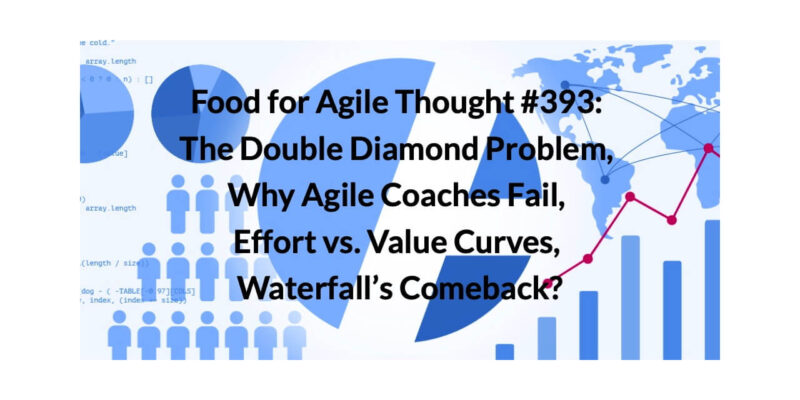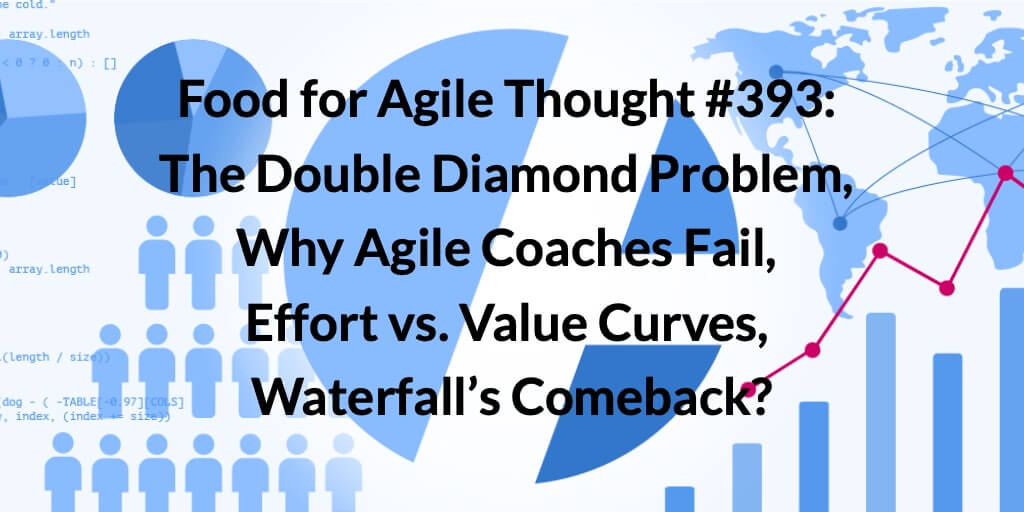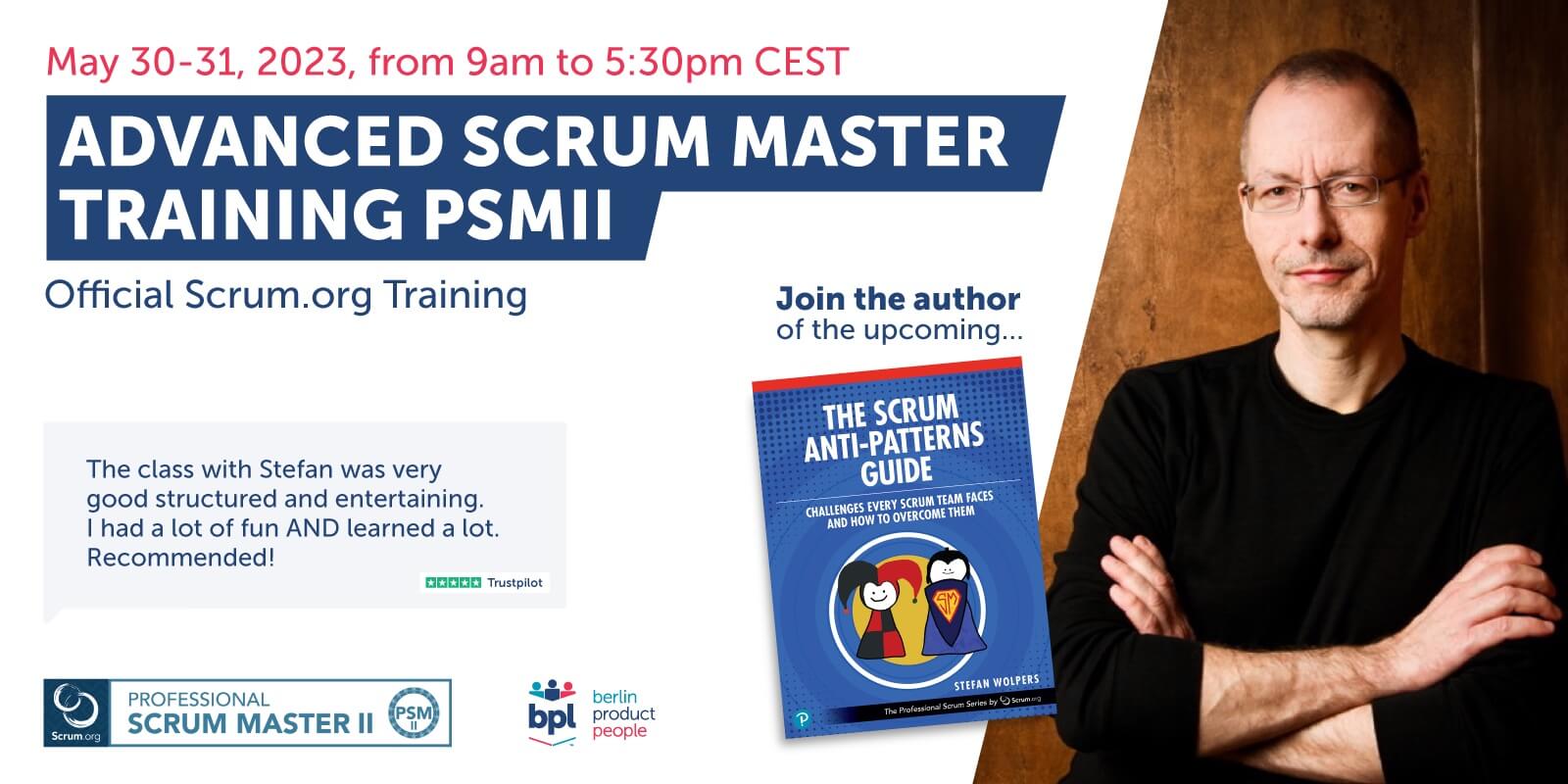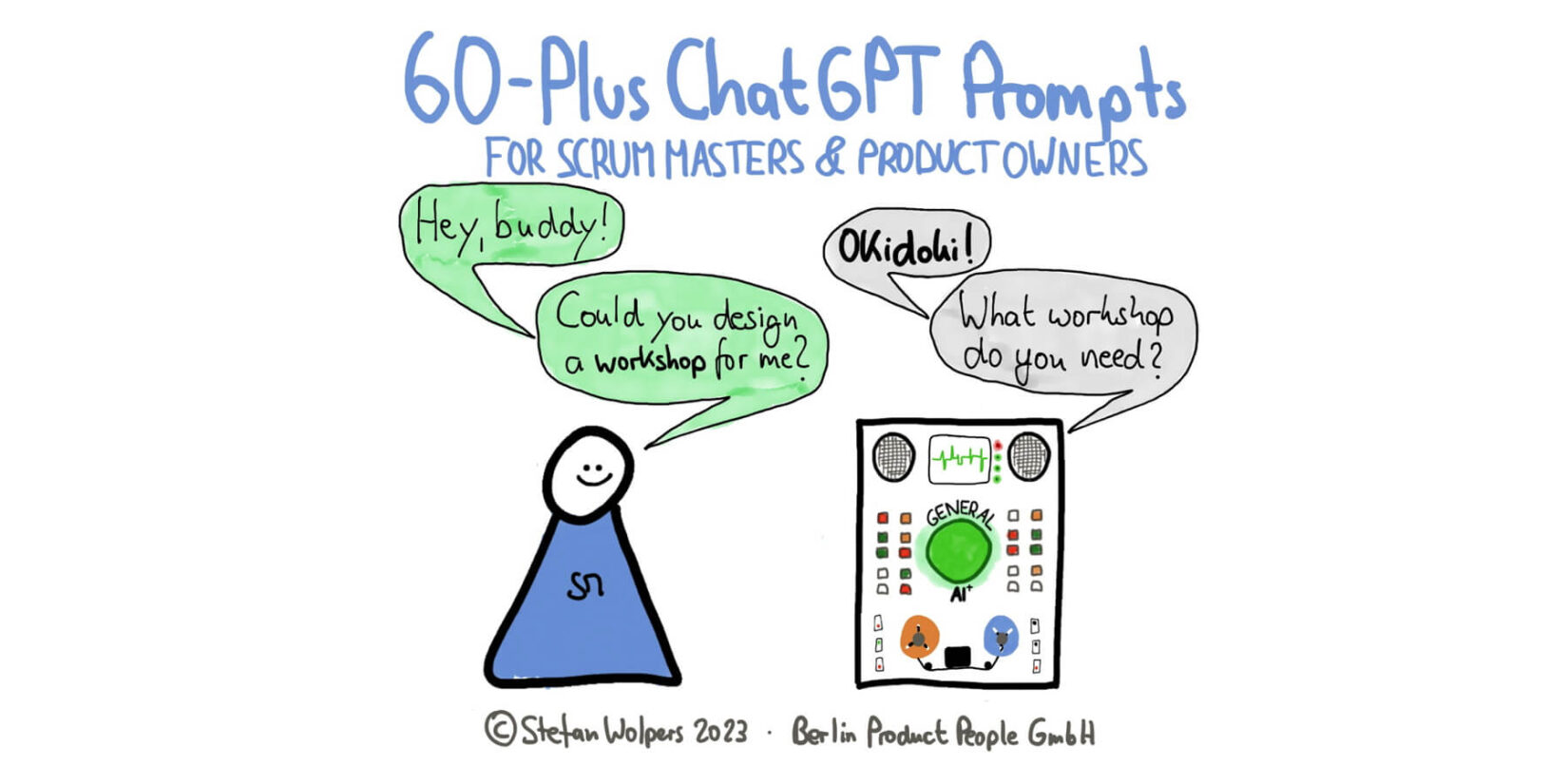TL; DR: The Double Diamond Problem — Food for Agile Thought #393
Welcome to the 393rd edition of the Food for Agile Thought newsletter, shared with 46,731 peers. This week, Jason Godesky takes a deep dive into the well-established design process, pointing to the Double Diamond problem. Also, we reflect on the hype the agile coaching industry is experiencing, causing the market entry of less qualified players, and we listen to Dave Farley interviewing Kent Beck on a classic topic of the agile community: Is Waterfall experiencing a comeback? Moreover, we offer a primer to creating ChatGPT prompts for Scrum practitioners to get you started running.
Then, John Cutler states that the (product) world does not need yet another prioritization framework. Instead, he suggests prioritizing a focus area. We share insights and examples on dealing with PMF’s evolving, fluctuating, and changing nature, and Lenny Rachitsky interviews Ayo Omojola on the aspects of creating outstanding products. Also, we point to the importance of inspecting and adapting OKRs regularly and provide a guide on how to do this.
Finally, we appreciate Mark Graban interviewing Joshua Kerievsky, discussing how ‘agility’ doesn’t strictly mean ‘Agile’ in software, and Gergely Orosz shares an “interview with the four researchers behind a new developer productivity framework: The three dimensions of DevEx.” Lastly, we close this week’s edition with a simple question: Should we be polite to chatbots?
🏅 The most popular discussion on LinkedIn this week was: Agile Failure Patterns in Organizations.
Did you miss the previous Food for Agile Thought’s issue 392?
🗞 Shall I notify you about articles like this one? Awesome! You can sign up here for the ‘Food for Agile Thought’ newsletter and join 46,000-plus subscribers.
🎓 Join Stefan in one of his upcoming Professional Scrum training classes!
📖 Get notified when the Scrum Anti-Patterns Guide book is available!
🏆 The Tip of the Week: The Double Diamond Problem
(via Medium): The Problem with the Double Diamond
Jason Godesky takes a deep dive into the well-established design process, noting that “double diamond is a great reflection of the way we often think of innovation happening, but it’s not the way that it actually happens.”
🍋 The Lemon of the Week
: Scrum fails for many reasons, but mostly because it's a religious cult.
This is complete nonsense: Scrum is a practical framework designed to enhance productivity in complex projects. It’s not a religion or cult because it doesn’t demand blind faith or adherence to a set of unquestionable beliefs. Instead, Scrum is not prescriptive but encourages adaptation, learning, and improvement based on empirical evidence and tangible outcomes. Furthermore, its principles and practices are grounded in clear logic and can be adapted to constraints.
➿ Agile & Scrum
: Why Agile Coaches & Agile Coaching Fail
Anton Zotin reflects on the hype the industry is experiencing, causing the market entry of less qualified players, resulting in a “decline in the overall quality of the profession.”
and (via YouTube): Kent Beck On AGILE vs WATERFALL
📺 Dave Farley interviews Kent Beck on a classic topic of the agile community: Is Waterfall per se evil? Moreover, is it probably experiencing a comeback?
and : Interview with Joshua Kerievsky on the Joy of Agility — It's Not Just for Software Companies
Mark Graban interviews Joshua Kerievsky, discussing how ‘agility’ doesn’t strictly mean ‘Agile’ in software.
🎓 🖥 💯 🇬🇧 Advanced Professional Scrum Master Online Training w/ PSM II Certificate — May 30-31, 2023
Discover Scrum’s four success principles in this guaranteed official Scrum.org Advanced Scrum Master training class including the industry-recognized PSM II certification. The PSM II training class is designed as a live virtual class and will be offered in English.
Enjoy the benefits of an live-virtual immersive class with like-minded agile peers from 09:00 – 17:30 o’clock CEST.
Learn more: 🖥 💯 🇬🇧 Advanced Professional Scrum Master Online Training w/ PSM II Certificate — May 30-31, 2023.
👉 From time to time, we can offer last-minute seats for training classes at cost to individuals who do not have access to a corporate training budget. If you like to be notified about these opportunities, please register here.
🎯 Product
: Effort vs. Value Curves
John Cutler states that the (product) world does not need yet another prioritization framework. Instead, he suggests prioritizing a focus area.
(via uxdesign.cc): What to do when you don’t have strong product-market fit
Andrea Saez shares insights and examples on dealing with PMF's evolving, fluctuating, and changing nature.
: Frameworks for product differentiation, team building, and thinking from first principles
Lenny Rachitsky interviews Ayo Omojola on the aspects of creating outstanding products.
📯 60 ChatGPT Prompts Plus Prompt Engineering Guide for Scrum Practitioners
ChatGPT can be an excellent tool for those who know how to create prompts. The simplest form of prompting ChatGPT is to feed it the task and ask for results. However, this approach is unlikely to trigger the best response from the model.
Instead, invest more time in prompt engineering, and provide ChatGPT with a better context of the situation, desired outcomes, data, constraints, etc. The following article offers a primer to creating ChatGPT prompts for Scrum practitioners to get you started running. You will learn:
- Prompt engineering basics
- Prompt engineering with services like PromptPerfect
- Using ChatGPT for prompt engineering. (Yub, that works, too.)
Learn more: 60 ChatGPT Prompts Plus Prompt Engineering Guide for Scrum Practitioners.
🛠 Concepts, Tools & Measuring
: DevEx: A new way to measure developer productivity – from the creators of DORA and SPACE
Gergely Orosz shares an “interview with the four researchers [Abi Noda, Margaret-Anne Storey, Nicole Forsgren, and Michaela Greiler] behind a new developer productivity framework: The three dimensions of DevEx.”
(via Substack): My 20 Year Career is Technical Debt or Deprecated
Matt Watson observes that his career mainly comprises deprecated technology and that everything you build becomes technical debt.
: A guide to OKR check-ins
Peter Kappus points to the importance of inspecting and adapting OKRs regularly, providing a guide on how to do this.
🎶 Encore
(via ethical.net): Should we be polite to chatbots?
Cennydd Bowles reflects on the pros and cons of using etiquette when talking to ChatGPT & Co. After all; chatbots are not sentient, are they?
: Catastrophe / Eucatastrophe: We have more agency over the future of AI than we think
Ethan Mollick reflects on the future of artificial intelligence, pointing out that “focus on apocalyptic events also robs most of us of agency.”
📅 Scrum Training & Event Schedule
You can secure your seat for Scrum training classes, workshops, and meetups directly by following the corresponding link in the table below:
See all upcoming classes here.
You can book your seat for the training directly by following the corresponding links to the ticket shop. If the procurement process of your organization requires a different purchasing process, please contact Berlin Product People GmbH directly.
📺 Join 5,000-plus Agile Peers on Youtube
Now available on the Age-of-Product Youtube channel to improve learning, for example, about the Double Diamond problem:
- Hands-on Agile 50: The Product Community of Practice with Petra Wille.
- Hands-on Agile 46: The Agile Fluency Model ® with Diana Larsen.
- Hands-on Agile 44: Honey, I Shrunk the Backlog with Allan Kelly.
- Hands-on Agile 43: Outcome-Based Product Planning with Jeff Gothelf.
- Hands-on Agile 42: Lean Roadmapping and OKRs with Janna Bastow.
- Hands-on Agile 38: The Product Owner with Roman Pichler.
✋ Do Not Miss Out and Learn more about The Double Diamond Problem — Join the 12,000-plus Strong ‘Hands-on Agile’ Slack Community
I invite you to join the “Hands-on Agile” Slack Community and enjoy the benefits of a fast-growing, vibrant community of agile practitioners from around the world.
If you like to join all you have to do now is provide your credentials via this Google form, and I will sign you up. By the way, it’s free.
Help your team to explore the Double Diamond problem by pointing them to the free Scrum Anti-Patterns Guide:








